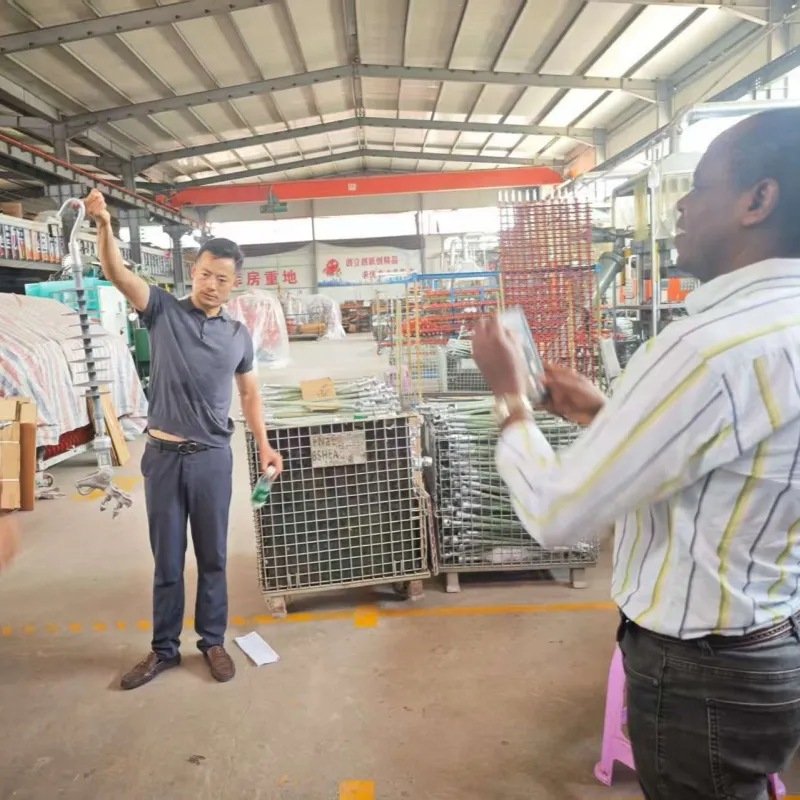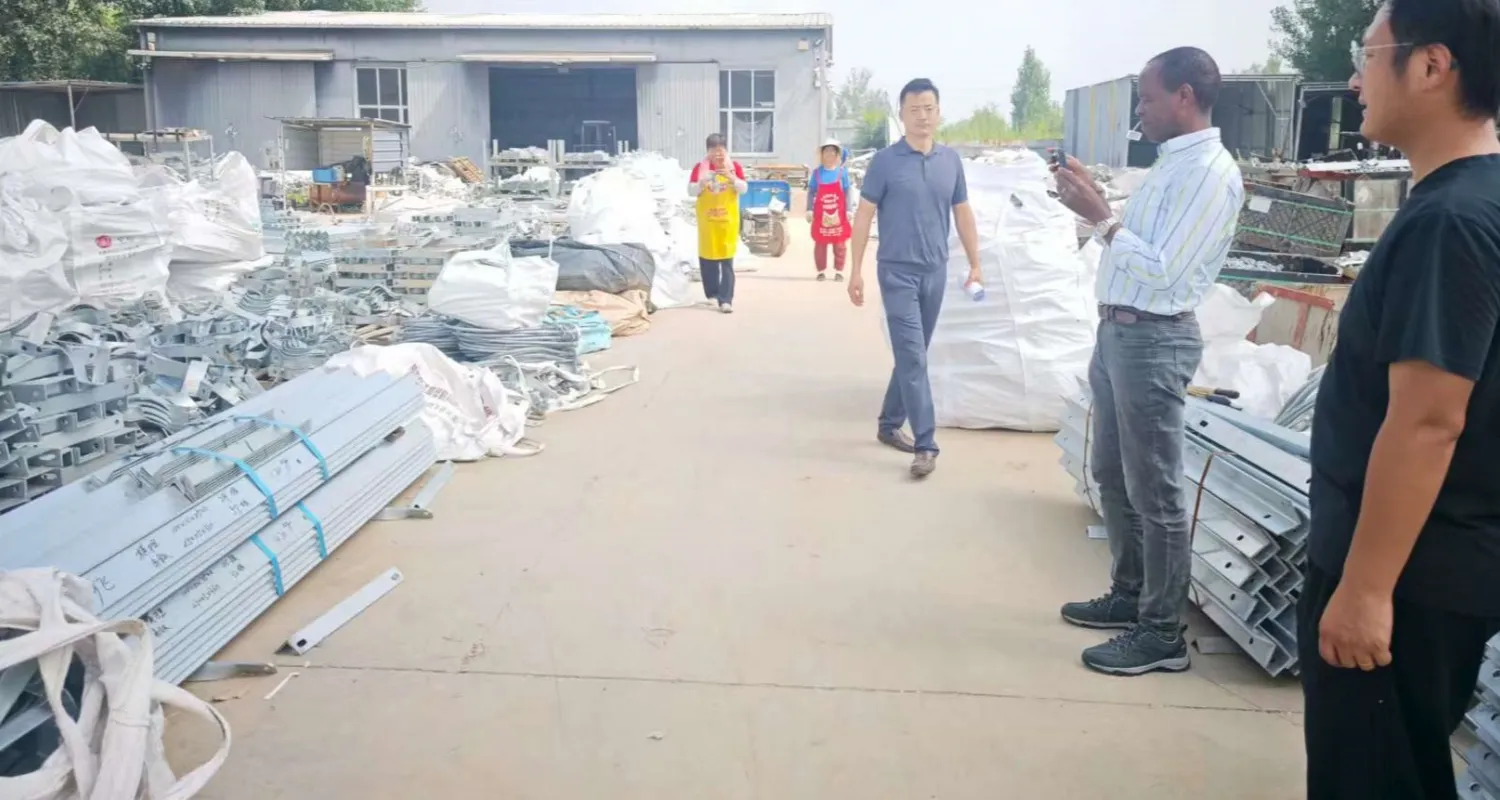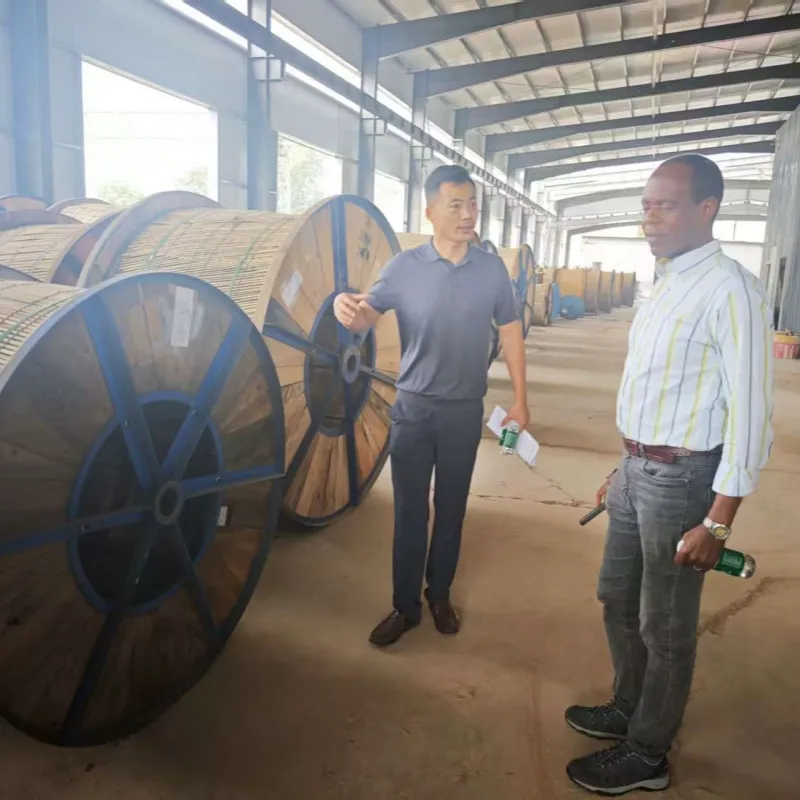Zambia Power Team Visit: 30kV Insulator Factory Audit Story
Last week, our factory in Hebei Province hosted a delegation from ZESCO, Zambia's state-owned power company. Their mission was to audit the production of
30kV Polymer Composite Suspension Insulators and galvanized steel crossarms for a rural electrification project. This audit was not just a routine supplier inspection but a prime example of how African power companies assess high-voltage insulator solutions in extreme environments.

Challenge: Powering Rural Zambia
Zambia faces a typical African challenge: expanding grid coverage to vast areas with limited maintenance resources. Their 30kV distribution lines face the following challenges:
Erosive sandstorms during the dry season
Flash-over risks triggered by heavy rains
Termite attacks on wooden poles
Budget constraints requiring a 20-year service life
“We cannot afford the risk of a failure occurring 100 kilometers away from the nearest maintenance workshop,” explained Joseph Banda, ZESCO's Chief Transmission Engineer. “That's why we flew to China—to verify whether your composite suspension insulators live up to their reputation.”
Factory workshop interior: where trust is built
1. Composite insulator laboratory tour
30kV composite suspension insulator UV resistance test: accelerated aging test conducted under xenon lamps matching Zambia’s solar radiation levels Tracking and erosion demonstration: applying 4,500V voltage under salt spray (Simulating dust + rain environment) Mechanical load test: Applying 120kN tensile stress to the end joints — equivalent to twice the rated load
“Your silicone rubber formulation passed the test, while others peeled off,” Banda said as he scraped the sample with his fingernail, “This hydrophobic surface is exactly what we need to prevent flashover during the rainy season.”

2. Hot-dip galvanized steel crossarm production
On the hot-dip galvanizing production line, ZESCO inspected:
Zinc coating adhesion: Minimum coating thickness of 86 μm (exceeding ISO 1461 standards)
Drilling accuracy: Hole alignment accuracy of ±0.5 mm to ensure compatible hardware installation
“Misaligned bolt holes can lead to assembly nightmares on-site,” commented Project Manager Linda Chibwe. “Your fixture-based machining process addresses this issue.”

“The African power grid is a mix of equipment from more than five countries,” Chibwe explained. “Your insulators must be compatible with old British, new Chinese, and South African line hardware.”
The order includes:
2,800 sets of 30kV composite suspension insulators
700 sets of hot-dip galvanized steel crossarms
Complete hardware kits: tension clamps, dampers, and other electrical hardware.

The official report emphasizes:
"Chinese manufacturers demonstrated exceptional control in the following areas:
1 Consistency of silicone rubber formulation (critical for UV/dust resistance)
2 Durability of zinc coating matching Zambia's corrosivity category C3
3 Compatibility with existing transmission line hardware in our inventory."

